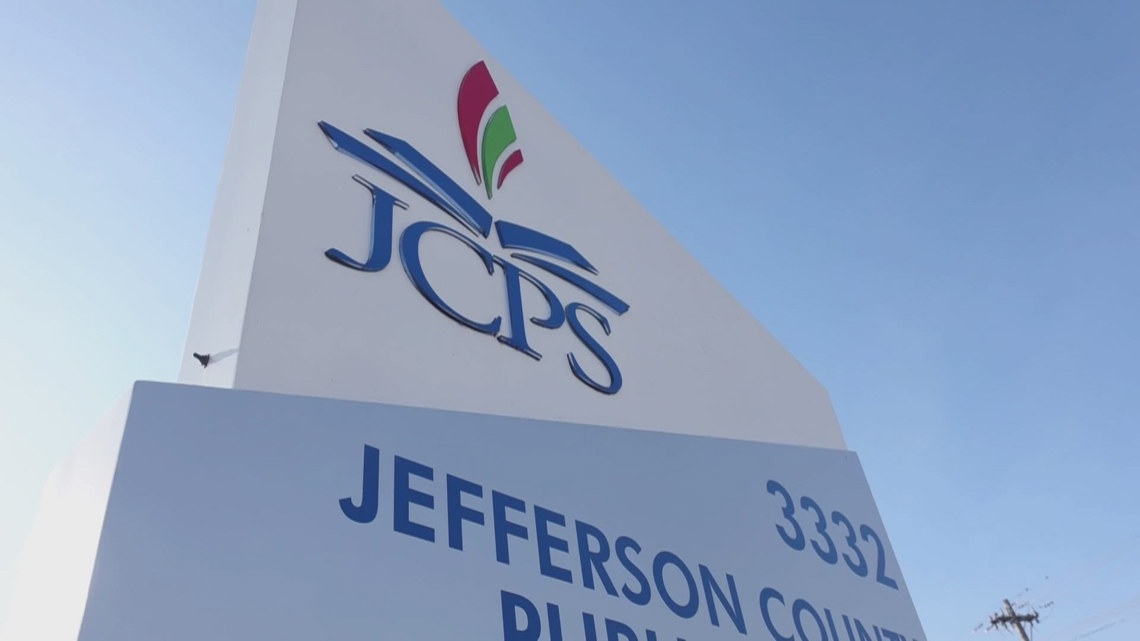Cassidy: ‘Literacy should be focus of K-12 education reform’ – Ripon Advance

Report on U.S. K-12 Education Reform and Alignment with Sustainable Development Goals
Introduction
A report issued by the U.S. Senate Health, Education, Labor, and Pensions (HELP) Committee, titled “Preventing A Lost Generation: A Vision For K-12 Reforms To Ensure Student Success,” advocates for significant reforms to the nation’s K-12 education system. The report places a critical emphasis on improving student literacy, a cornerstone for achieving Sustainable Development Goal 4 (SDG 4), which aims to ensure inclusive and equitable quality education and promote lifelong learning opportunities for all.
Key Findings: Challenges to Achieving SDG 4 (Quality Education)
The report identifies several critical issues that impede progress toward national education standards and foundational SDG targets, particularly Target 4.6, which seeks to ensure all youth achieve literacy and numeracy.
- Declining Literacy Proficiency: Citing the 2024 National Assessment of Educational Progress, the report highlights a significant decline in reading scores for 4th and 8th-grade students since 2019. The percentage of students performing at a “below basic” reading level has reached a historical high, indicating a regression from the goal of effective learning outcomes as outlined in SDG Target 4.1.
- Systemic Inadequacies: The document posits that the current education system’s “status quo” is failing to meet the diverse needs of students, necessitating a fundamental shift toward more effective, individualized educational approaches.
- Socio-Economic Repercussions: Illiteracy is directly linked to adverse societal outcomes that contravene multiple SDGs. These include:
- Higher rates of high school incompletion, undermining SDG 4.
- Increased rates of incarceration, which conflicts with the aims of SDG 16 (Peace, Justice and Strong Institutions).
- A diminished capacity to fill STEM-related jobs, impacting national progress toward SDG 8 (Decent Work and Economic Growth) and SDG 9 (Industry, Innovation and Infrastructure).
Strategic Recommendations for Advancing Quality Education
The committee proposes a series of reforms designed to create a pro-family and pro-student educational framework. These recommendations align with several SDG targets aimed at improving educational quality, equity, and accountability.
- Strengthen Accountability and Resource Management: To ensure public funds advance effective learning, the report calls for greater accountability. This involves directing taxpayer dollars toward proven, evidence-based methods for teaching literacy, a principle that supports the effective implementation of SDG 4 and the development of strong institutions under SDG 16.
- Empower Families to Reduce Inequality: A key recommendation is to redirect federal education funding to families, enabling them to access tutoring and other literacy support programs. This approach promotes parental engagement and choice, directly supporting SDG 10 (Reduced Inequalities) by providing customized educational resources to meet individual student needs.
- Implement Early Detection for Inclusive Education: The report advocates for using federal resources to fund early-detection screening for learning challenges that impede literacy. This aligns with SDG Target 4.5, which calls for ensuring equal access to all levels of education for the vulnerable and students with disabilities.
- Enhance Teacher Capacity and Classroom Tools: A final recommendation focuses on equipping teachers with superior tools and strategies for effective literacy instruction. This measure is crucial for fulfilling SDG Target 4.c, which aims to increase the supply of qualified teachers through improved training and support.
Analysis of Sustainable Development Goals in the Article
1. Which SDGs are addressed or connected to the issues highlighted in the article?
-
SDG 4: Quality Education
This is the most prominent SDG in the article. The entire text focuses on the need to reform the K-12 education system in the United States, with a specific emphasis on improving student literacy. The article discusses declining reading scores, the need for effective teaching methods, and ensuring all students achieve foundational skills. It directly quotes Senator Cassidy: “Teaching students how to read effectively should be the top priority of America’s K-12 education system.”
-
SDG 8: Decent Work and Economic Growth
The article connects the failure of the education system to broader economic consequences. It states that illiteracy “impacts the nation’s ability to fill STEM jobs, raising serious concerns about global economic competitiveness.” This directly links the quality of education to the workforce’s skills and the nation’s economic health, which is a core concern of SDG 8.
-
SDG 16: Peace, Justice and Strong Institutions
This goal is relevant through the article’s discussion of the consequences of illiteracy and the need for institutional reform. The report links illiteracy to “increasing rates of… incarceration,” which touches upon the justice aspect of SDG 16. Furthermore, the recommendations to “strengthen accountability to ensure taxpayer dollars support proven methods” and empower parents with information call for more effective, accountable, and transparent institutions, a key target of this goal.
2. What specific targets under those SDGs can be identified based on the article’s content?
-
SDG 4: Quality Education
- Target 4.1: By 2030, ensure that all girls and boys complete free, equitable and quality primary and secondary education leading to relevant and effective learning outcomes. The article’s focus on reforming the “nation’s K-12 education system” to prevent “a lost generation” and ensure “student success” directly aligns with this target of achieving effective learning outcomes in primary and secondary education.
- Target 4.6: By 2030, ensure that all youth and a substantial proportion of adults, both men and women, achieve literacy and numeracy. The central theme of the article is the urgent need to “improve child literacy,” which is the core objective of this target.
- Target 4.a: Build and upgrade education facilities that are child, disability and gender sensitive and provide safe, non-violent, inclusive and effective learning environments for all. The recommendation for “early-detection screening for learning needs” and providing “specialized care” for students with different needs supports the creation of inclusive and effective learning environments.
-
SDG 8: Decent Work and Economic Growth
- Target 8.6: By 2020, substantially reduce the proportion of youth not in employment, education or training. Although the target date has passed, the principle is highly relevant. The article highlights that illiteracy leads to “high school incompletion” and an inability to “fill STEM jobs,” directly contributing to the number of youths not in education or meaningful employment.
-
SDG 16: Peace, Justice and Strong Institutions
- Target 16.6: Develop effective, accountable and transparent institutions at all levels. The report’s call to “strengthen accountability to ensure taxpayer dollars support proven methods” and move funding “from unelected Washington bureaucrats directly to families” is a direct call for reforming educational institutions to be more effective and accountable.
- Target 16.7: Ensure responsive, inclusive, participatory and representative decision-making at all levels. The emphasis on empowering parents with “information about school achievement in literacy” and ensuring their “rights must be protected” so they “have a seat at the table” reflects the principle of inclusive and participatory decision-making.
3. Are there any indicators mentioned or implied in the article that can be used to measure progress towards the identified targets?
Yes, the article mentions several direct and implied indicators:
- Indicator for Target 4.1 & 4.6: The article explicitly cites data from the “2024 National Assessment of Educational Progress report” as a key measure. Specific indicators mentioned are:
- “Reading scores among 4th and 8th graders.”
- “The percent of students performing ‘below basic’ in reading.”
- Indicator for Target 8.6: The article implies several indicators by linking illiteracy to specific outcomes:
- “Rates of high school incompletion.”
- The nation’s ability to “fill STEM jobs,” which could be measured by the number of vacancies or the percentage of graduates qualified for these roles.
- Indicator for Target 16 (Justice aspect): The article implies a link between literacy and justice system outcomes, suggesting that “incarceration” rates could be an indirect indicator of the education system’s failures.
- Indicator for Target 16.7: An implied indicator for parental participation would be the level of access parents have to “information about school achievement in literacy” and their ability to “choose the best education option for their children.”
4. Summary Table of SDGs, Targets, and Indicators
| SDGs | Targets | Indicators Identified in the Article |
|---|---|---|
| SDG 4: Quality Education |
4.1: Ensure quality primary and secondary education for effective learning outcomes.
4.6: Achieve literacy and numeracy for all youth. |
– Reading scores among 4th and 8th graders. – Percent of students performing “below basic” in reading. – Data from the National Assessment of Educational Progress report. |
| SDG 8: Decent Work and Economic Growth | 8.6: Reduce the proportion of youth not in employment, education or training. |
– Rates of high school incompletion. – The nation’s ability to fill STEM jobs. – Global economic competitiveness. |
| SDG 16: Peace, Justice and Strong Institutions |
16.6: Develop effective, accountable and transparent institutions.
16.7: Ensure responsive, inclusive and participatory decision-making. |
– Increasing rates of incarceration (as a consequence of system failure). – Parental access to information on school literacy achievement. – Use of taxpayer dollars for “proven methods” (accountability metric). |
Source: riponadvance.com

What is Your Reaction?
 Like
1
Like
1
 Dislike
1
Dislike
1
 Love
1
Love
1
 Funny
0
Funny
0
 Angry
0
Angry
0
 Sad
0
Sad
0
 Wow
0
Wow
0










/campaigns/16-days-of-activism-against-gender-based-violence/pr-web-banner.tmb-1200v.jpg?sfvrsn=8cc7b98e_1#)




































































